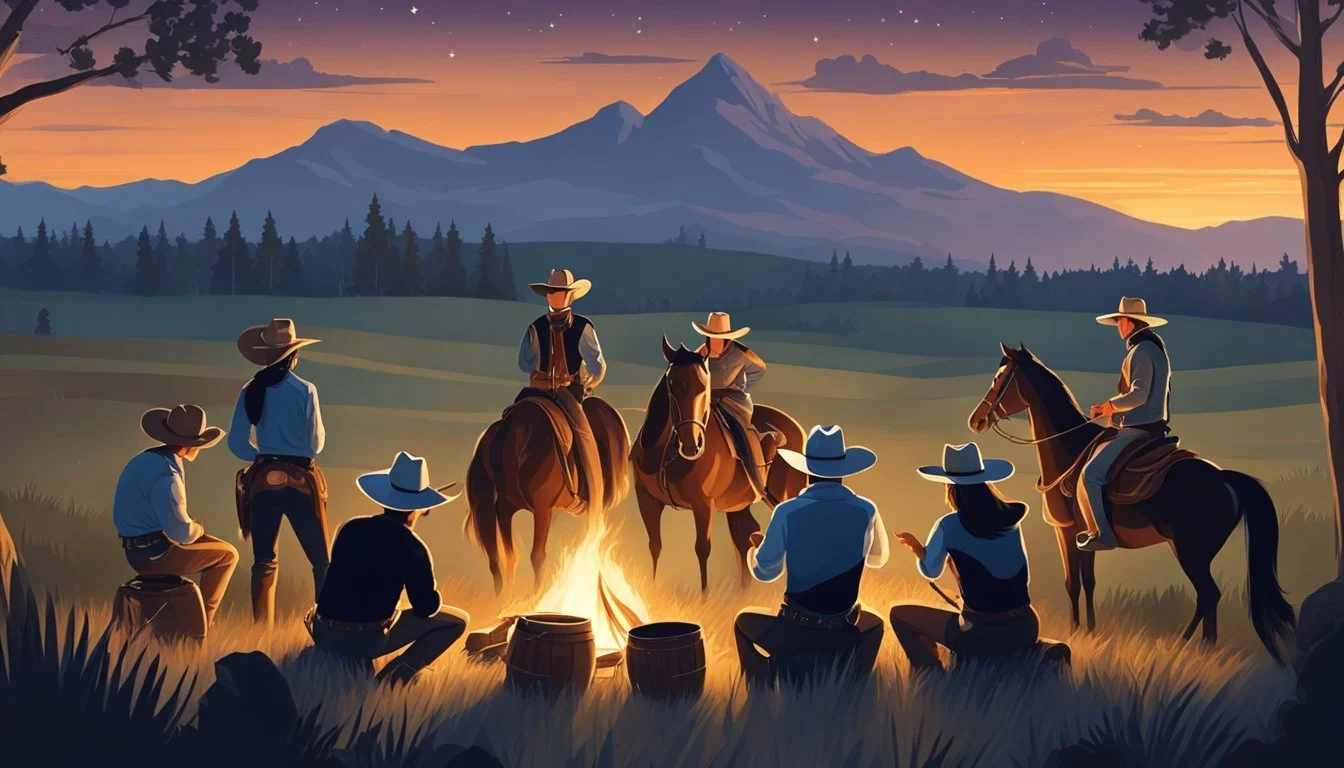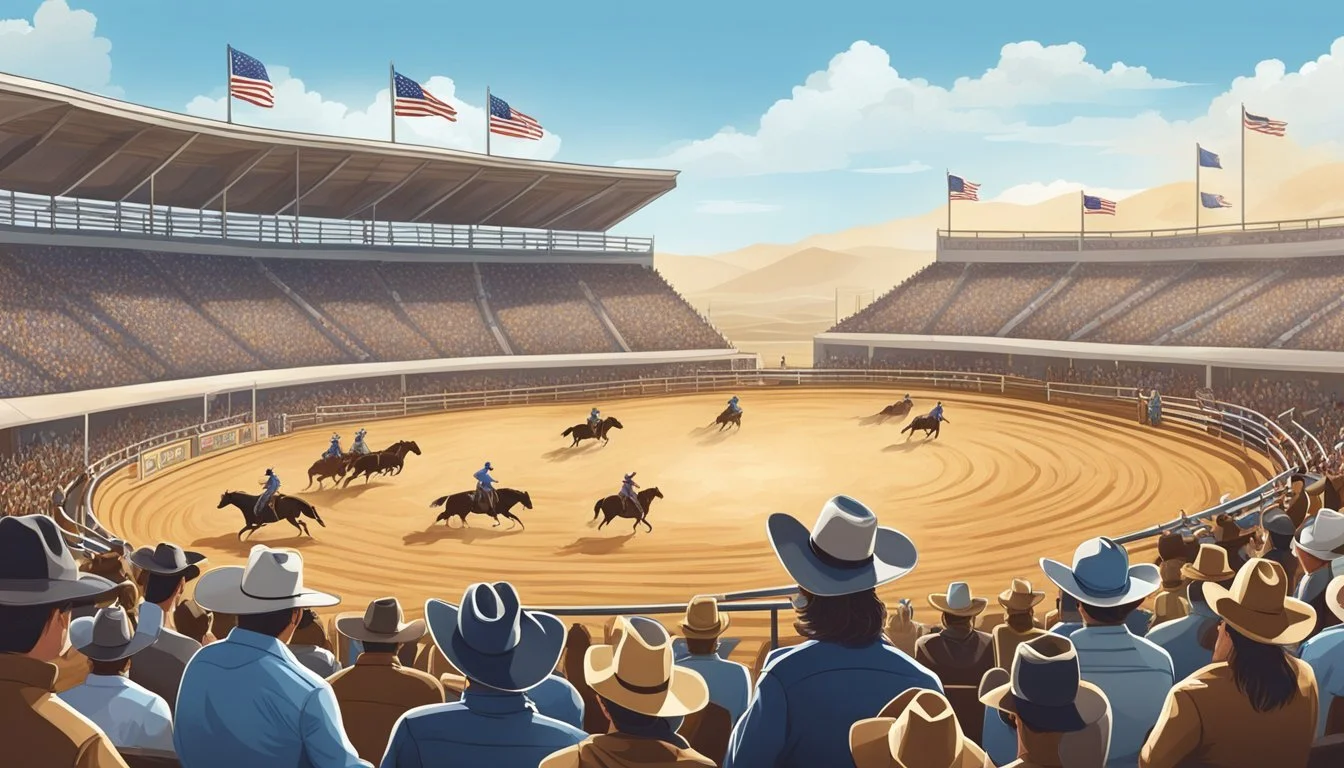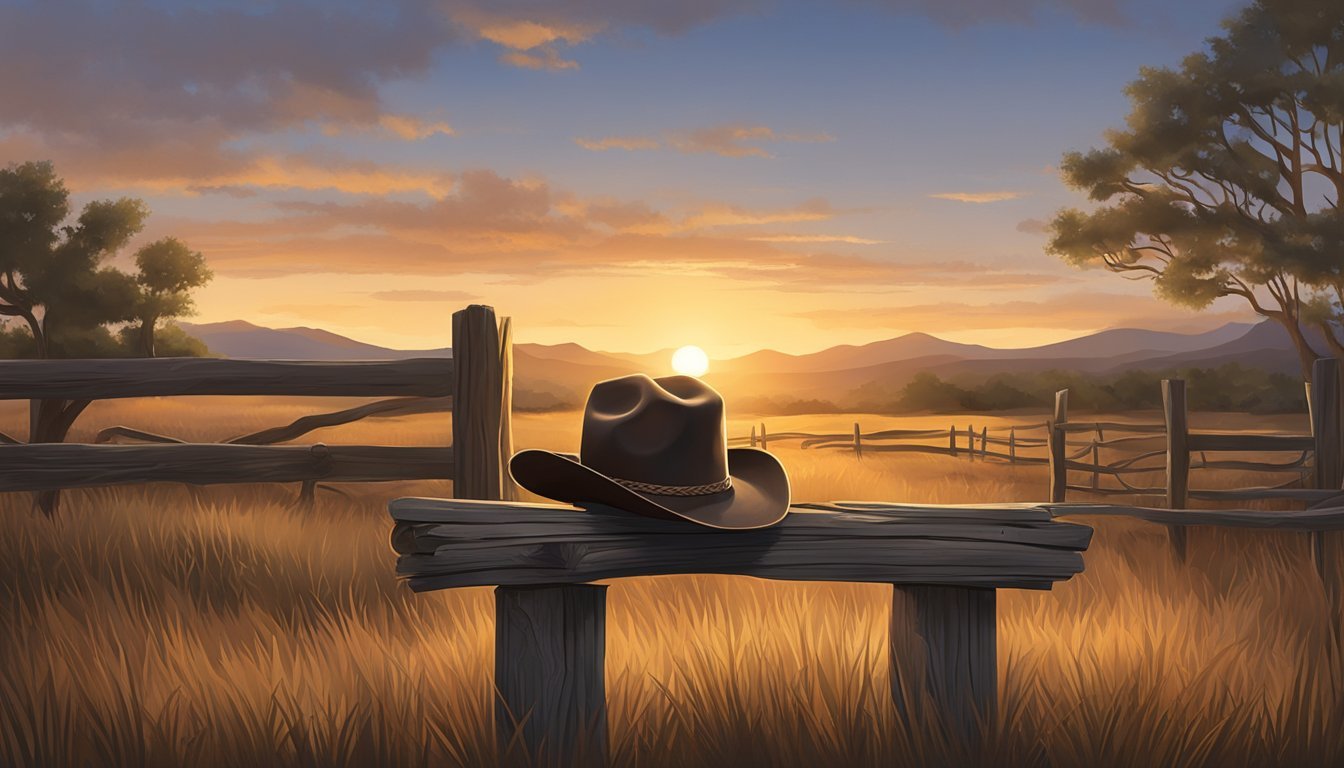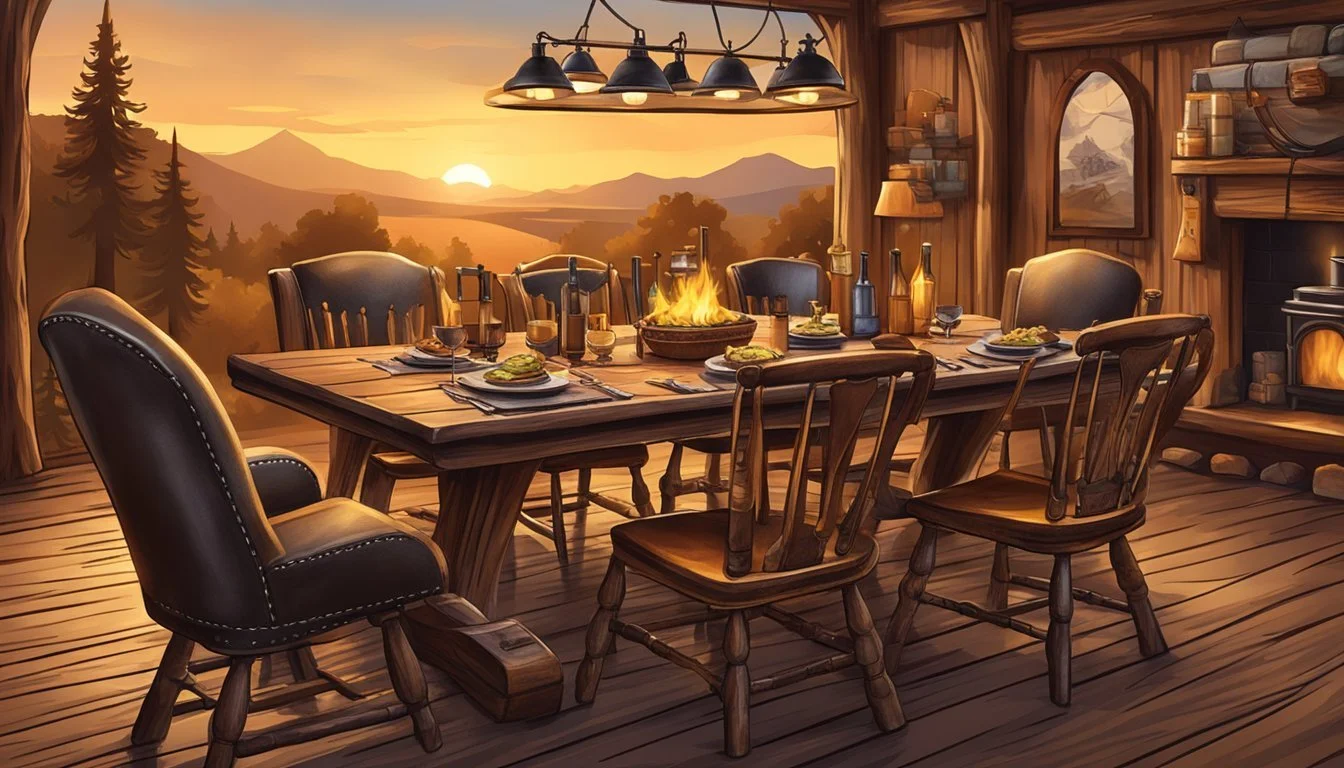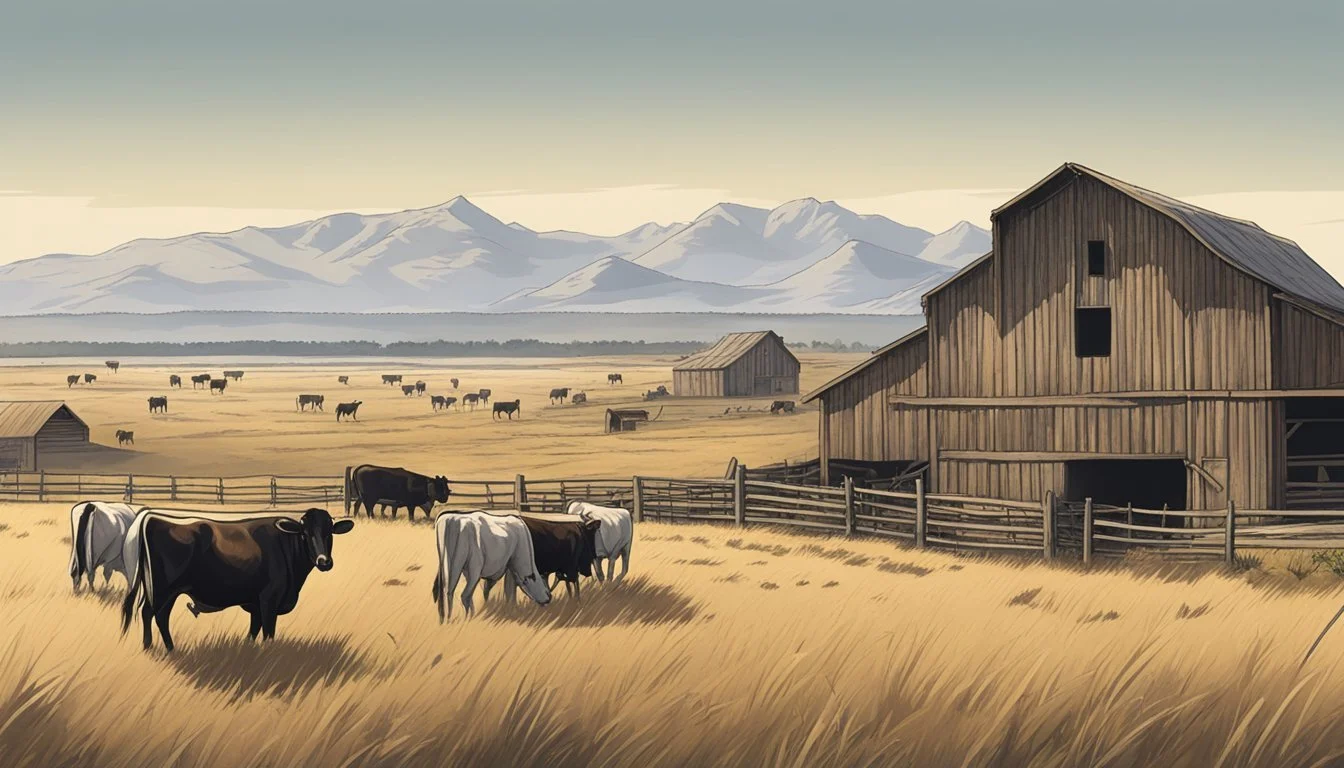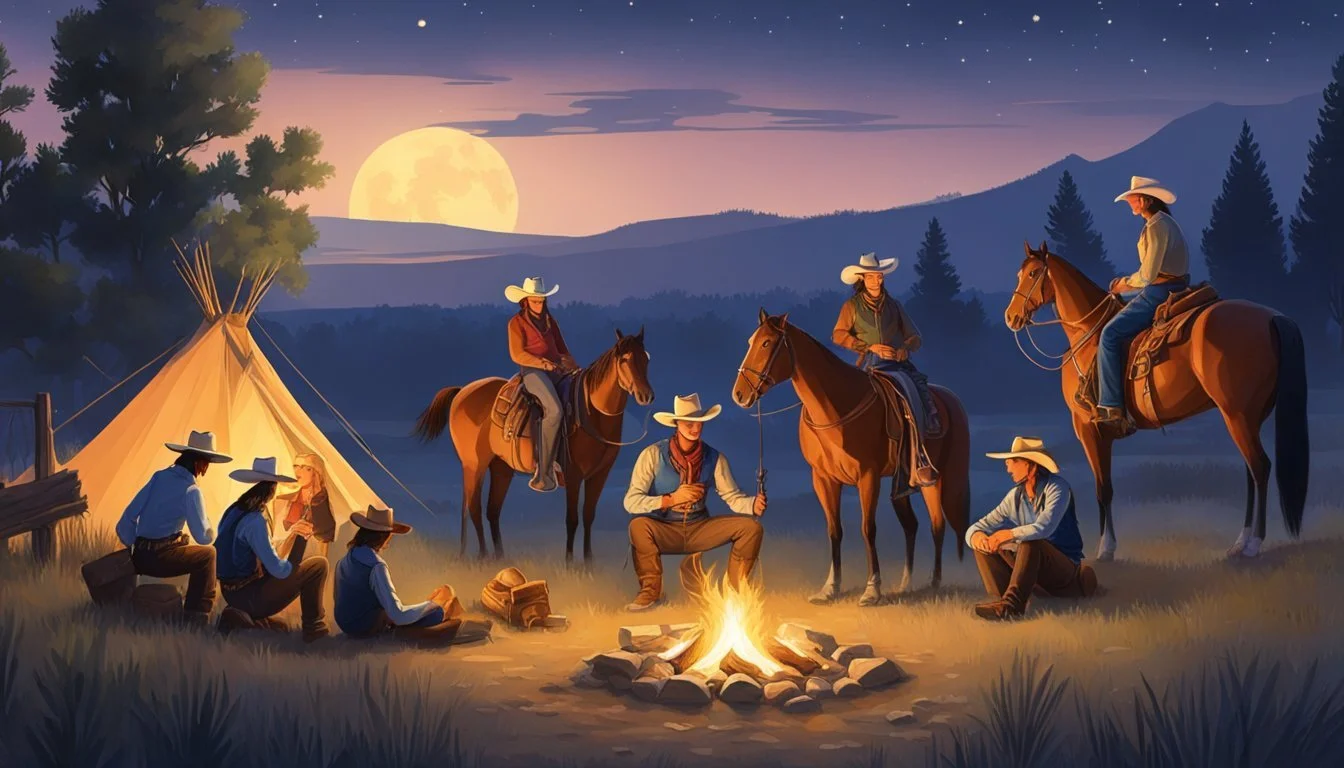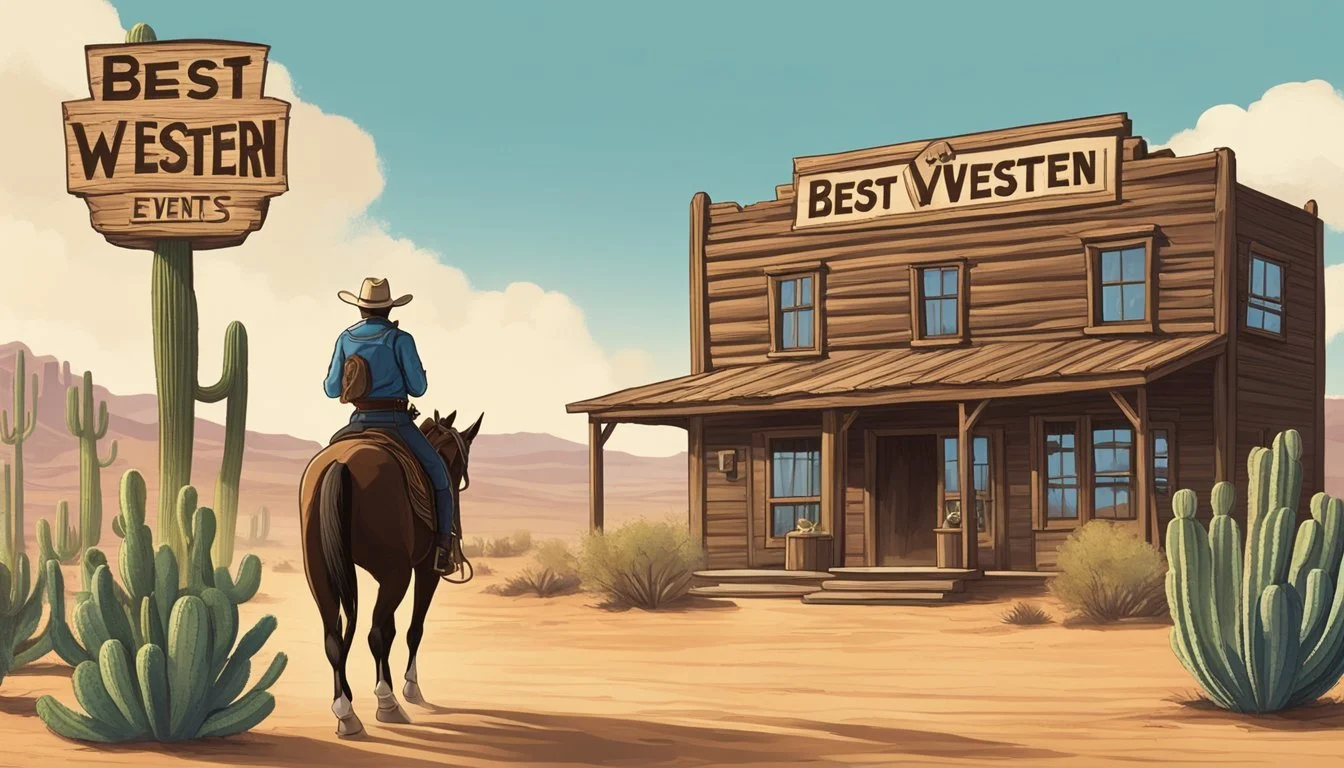The Texas Cowboy's Guide to the Best Western Themed Events
Your Ultimate Source for Authentic Hoedowns and Rodeos
In the heart of Texas, the spirit of the cowboy is alive and thriving, manifesting through a myriad of Western-themed events that celebrate the state's rich heritage. Embracing the traditions of the Old West, these events offer a genuine insight into cowboy culture, from the attire and music to the skills and lifestyles that have shaped the identity of the Lone Star State. They provide not only entertainment but also a historical window into the lives of those who lived and thrived in an era that's become synonymous with resilience and adventure.
Texas's cowboy culture is best experienced through its numerous events that reflect the essence of Western life. Visitors and locals alike can witness historic cattle drives in places like the Fort Worth Stockyards, where twice-daily events hark back to the days of the Chisholm Trail. Furthermore, authentic dude ranches scattered throughout the state invite guests to step into the boots of a cowboy and partake in the day-to-day ranching operations. Not only do these ranches preserve cowboy traditions, but they also create lasting memories through hands-on experiences that are both educational and fun.
These festivities and locales serve as a testament to the enduring legacy of Texas cowboys. They're designed to both honor the past and provide interactive experiences that ensure cowboy traditions will not be forgotten. For those looking to immerse themselves in Western heritage, Texas offers an array of opportunities that go beyond simple spectating, encouraging active participation and a genuine connection to the cowboy way of life.
History of Texas Cowboy Culture
The Texas cowboy culture stems from a rich heritage that melds Native American, European, and Mexican influences. It is a fundamental aspect of the Old West's identity, embodying the essence of the American cowboy experience.
Origins and Influences
Vaqueros, the pioneering cowboys of Spanish origin, laid the groundwork for the cowboy culture in Texas during the 17th and 18th centuries. Their skills in herding cattle were unparalleled, and they introduced essential techniques such as roping and managing livestock on horseback. The cultural exchange between vaqueros, Native Americans, and European settlers formed the diverse tapestry of the cowboy heritage.
European Settlers: Brought livestock herding traditions.
Native Americans: Offered knowledge of the land and native cattle species.
Mexicans (Vaqueros): Mastered techniques of cattle ranching and horsemanship in the American West.
Notable Figures in Cowboy History
One cannot discuss the history of Texas cowboys without mentioning Charles Goodnight. He epitomitized the American cowboy and was a driving force behind the development of the cattle industry in Texas. Goodnight, alongside other trailblazers like Oliver Loving, pioneered the cattle drive routes that enabled thousands of heads of cattle to be moved north, establishing the archetype of the cowboy experience.
Charles Goodnight:
Known for: Development of the Goodnight-Loving Trail
Contribution: Innovation in cattle drives and ranching methods
The vaqueros and figures like Charles Goodnight created the legacy that defines the Texas cowboy culture, an enduring symbol of the rugged spirit of the Old West.
Traditional Western Events and Experiences
In Texas, the spirit of the Old West is preserved through numerous events that allow citizens and visitors to step back in time. From exhilarating rodeos to historic cattle drives, there are distinct experiences that define the cowboy culture in this great state.
Rodeos and Cattle Drives
Rodeos represent the competitive heart of cowboy tradition. Events like bull riding, barrel racing, and team roping draw crowds, epitomizing the skills of the cowboy era. The Fort Worth Stockyards, a premier destination for rodeos, hosts a historic cattle drive twice daily, which reflects the original purpose of cowboys herding cattle across the open range. In addition, the Tejas Rodeo Company in San Antonio offers regular rodeo competitions, providing an authentic showcase of cowboy skills.
Key Rodeo Event: Fort Worth Stockyards
Weekly Rodeos: Tejas Rodeo Company
Visiting Historical Ranches
Texas ranches offer a tangible connection to the past. These historic cattle ranches, open to the public, allow visitors to experience the cowboy lifestyle firsthand. Exploring a ranch such as the Dixie Dude Ranch gives insight into the state's cattle ranching heritage, with the opportunity to participate in horseback riding, witness live demonstrations, and enjoy Western hospitality.
Historical Ranch: Dixie Dude Ranch in Bandera
The Celebration of Cowboy Heritage Events
Cowboy heritage is celebrated throughout Texas with numerous events that honor this cultural legacy. The Witte Museum in San Antonio provides educational exhibitions that delve into the state's rich ranching history. If one desires to immerse themselves in the cowboy way of life, events like the annual San Antonio Stock Show & Rodeo offer an extensive look at the artistry and athleticism inherently tied to Western traditions.
Educational Venue: The Witte Museum in San Antonio
Annual Event: San Antonio Stock Show & Rodeo
Cowboy Attire and Symbolism
When attending Western-themed events, the quintessential cowboy hats and boots are not just fashion statements but carry deep cultural significance. They reflect a legacy steeped in practicality and Texan spirit.
Cowboy Hats and Boots
Cowboy Hats: Traditionally, the cowboy hat serves several functions; it provides shade from the harsh sun, serves as a water receptacle, and is a strong part of Texan identity. The cowboy hat echoes a sense of authenticity and pride that resonates with the history and culture of Texas.
Materials: Commonly made from felt or straw, the material often depends on the season.
Styles: The broad brim and high crown are distinctive features, but variations like the "ten-gallon" add individual flair.
Cowboy Boots: Beyond their durable design, which was initially purposed for horseback riding and ranch work, cowboy boots have morphed into symbols of resilience and cultural heritage. While utility was the original intent, modern cowboy boots also push the envelope of style with intricate designs and premium materials.
Construction: Boots are traditionally crafted from leather with a high ankle to protect the wearer, and a pointed toe to ease foot insertion into stirrups.
Variety: From classic leather to exotic skins, boots can be a canvas for personal expression while maintaining their rustic essence.
Maintaining Rustic Style
To keep the rustic style authentic, one must understand that durability and simplicity are key elements of cowboy attire. The garments are not just symbolic but are practical attire that have evolved from the demanding work of ranch life.
Materials: Quality leather, denim, and heavy cotton ensure longevity and practicality.
Care: Regular cleaning and conditioning of leather and proper garment care will preserve the rustic aesthetic while upholding the functionality.
The art of donning cowboy attire lies in the balance between form and function, with each piece of clothing not just serving a purpose but also telling the rich story of the Texas cowboy.
The Texas Cowboy Lifestyle
The Texas cowboy lifestyle is emblematic of a rich heritage and a connection to the ranching traditions that date back centuries. At its core, it's about the daily interaction between ranchers, their environment, and the livestock they tend.
Daily Life on the Ranch
Texas ranchers commence their days with the rising sun and wrap up their work under the glow of the setting horizon. They engage in a variety of tasks that include feeding and caring for horses and livestock, maintaining ranch equipment, and practicing their skills with the lasso. Their work is physical and demanding, requiring both strength and agility. The rhythm of daily life is set to the sounds of nature and the needs of the cattle industry.
Typical daily tasks include:
Morning feeding and health checks of animals
Repairing fences, structures, and ranch implements
Training horses and preparing for round ups
Managing the breeding and sales of longhorn cattle
Performing general ranch upkeep and land management activities
The Connection with Nature and Livestock
Ranchers have an intrinsic bond with the natural world. Their work demands a deep understanding of the outdoors, the ability to read the weather, and knowledge of the land they steward. They spend the majority of their time outside, nurturing a profound respect for the environment while overseeing vast herds of cattle across the open terrain.
Key aspects of their connection with nature and livestock include:
Daily interaction with horses, a relationship central to managing herds
A hands-on approach to guiding and caring for livestock
Continuous monitoring of pastures and water sources, ensuring a healthy ecosystem
Environmental stewardship, maintaining a balance between ranch operations and preserving the natural beauty of Texas landscapes
Cowboy Cuisine and Dining
In the heart of Texas, cowboy cuisine is more than just food—it's a vital part of the Western heritage, offering a rich blend of flavors coupled with a storied tradition of outdoor cooking.
Cowboy Kitchen Favorites
Texan cowboy cuisine predominantly features hearty, robust ingredients designed to fuel a day of ranch work. Beef, often in the form of steaks or brisket, is a staple, paired traditionally with sides like cowboy beans, which are pinto beans slow-cooked with onion, garlic, and, occasionally, a kick of chili. Cornbread, another favorite, is commonly baked in cast-iron skillets and served as a versatile companion to various dishes.
Beef: Grilled or smoked, it's the centerpiece of the cowboy plate.
Cowboy Beans: Simmered with spices; perfect for pairing with meats.
Cornbread: A crumbly and comforting side, best enjoyed warm.
Chili: A spicy stew that warms the soul, often containing meat and beans.
Outdoor Cooking Traditions
Outdoor cooking is an art form deeply ingrained in Texas culture. Barbecue, a method of cooking meat slowly over indirect heat, showcases the cowboy's mastery over fire and flavor. Ingredients such as corn, beans, and beef are staples that effortlessly transition from the chuckwagon to the modern outdoor grill. Outdoor feasts frequently feature a variety of barbecue styles, from briskets to ribs, all showcasing the skill of balancing smoke and seasoning.
Barbecue: Slow-cooked to infuse deep flavors into the meat.
Outdoor Grilling: Direct-flame cooking that seals in the juicy taste of the range.
Chuckwagon Meals: Historical cooking setups that inspire today’s outdoor events.
The recipes and methods used in cowboy cuisine reflect a legacy that continues to shape Texas's identity, offering a taste of the Wild West with every bite.
Music and Entertainment
The culture of Texas cowboys showcases a rich tapestry of music and entertainment deeply rooted in Western tradition. This section delves into the significant influence of country music and the quintessential Western movies and storytelling that encapsulate the cowboy spirit.
Country Music Influence
In Texas, country music is not just a genre; it is a way of life that resonates with the cowboy heritage. Live Country Music venues dot the entire state, offering visitors a chance to immerse themselves in the soulful melodies and heartfelt lyrics reflective of cowboy life. The Fort Worth Stockyards, for example, is a hub for all things cowboy and includes a daily cattle drive, giving attendees a lively soundtrack to this historic event.
Essential Elements of Country Music in Texas:
Storytelling Lyrics: Songs often tell tales of love, hardship, and adventure.
Traditional Instruments: Guitars, fiddles, and banjos are staple sounds.
Dance Halls: Venues like Gruene Hall, the oldest dance hall in Texas, offer an authentic space for country dancing.
Western Movies and Storytelling
Western movies and cowboy storytelling sessions invoke the dramatic escapades of the Old West. These stories and films often highlight the untamed landscapes of Texas, like those found in the "Grand Canyon of Texas," and the heroic deeds of its past inhabitants. They play a pivotal role in preserving the cowboy ethos and sparking imagination about the rugged cowboy lifestyle.
Features of Western Movies and Storytelling:
Heroic Characters: Central figures typically exhibit the courage and roughness associated with cowboys.
Wild West Landscapes: Films and stories utilize the natural backdrop of Texas to set the stage.
Historical Accuracy: Many events and characters are based on real-life figures and occurrences in cowboy history.
The balance between music and visual storytelling continually fuels the fascination with Texas' cowboy culture and ensures its legacy endures through generations.
Cowboy-Themed Parties and Decor
When planning a cowboy-themed party, the aim is to encapsulate the spirit of the Lone Star State with authentic decor and creative ideas that resonate with the western vibe. Central to this theme is the use of iconic cowboy and wild west symbols throughout the event elements.
Party Planning Essentials
A successful cowboy party hinges on immersive invitations and purposeful schedules. Cowboy 'Wanted' invitations typically generate excitement, setting the tone for the event. They should include all the necessary details like the date, time, and location, with a rustic touch. In Texas, especially places like Dallas, event starts matter; a strategic schedule that allows for the heat of the day to pass could enhance guest comfort.
Invitations: 'Wanted' poster design; Include a mini cowboy hat.
Venue: Open spaces; Consider ranches or barns.
Timing: Late afternoon or evening start times are preferable.
Activities: Organized games and contests related to the cowboy theme.
Decor and Setting Ideas
The decor should reflect the essence of a western environment, often achieved with items like hay bales for seating or thematic elements. Accentuating with the right decor can transport guests to a bygone era of cowboys and cattle drives.
Seating: Hay bales covered with blankets for a rustic look.
Centerpieces: Use cowboy boots as vases for wildflowers.
Backdrops: Install a wooden façade of a saloon or a jail for photo opportunities.
Tableware: Bandana-print napkins, metal plates, and mason jar glasses.
Lighting: Lantern-style lights or strung up Edison bulbs to set the mood.
Props: Scatter cowboy hats, bandanas, lassos, and horseshoe decorations around the venue.
Ranching and the Cattle Industry
Texas has a rich heritage in ranching, with institutions like the King Ranch playing pivotal roles. As these ranches developed, they impacted not only Texas's landscape but also its economy.
Ranching Techniques and Innovations
The evolution of ranching techniques has defined the cattle industry in Texas. The introduction of barbed wire in the late 19th century revolutionized cattle ranching by providing a means to fence vast areas of open range, thereby controlling the movement of cattle and reducing the need for large teams of cowboys. This innovation ensured the efficient management of large herds, a key factor in the success of historic ranches such as the King Ranch, which spans over 825,000 acres and became emblematic of this evolution.
Ranching in Texas is also characterized by the breeding and raising of cattle. Adaptation and selective breeding have produced hearty breeds like the Texas Longhorn, well-suited to the state's climate. These techniques ensure the health and profitability of herds across Texas.
Impact of Ranching on Texas Economy
Ranching remains a cornerstone of the Texas economy. Its influence extends beyond the direct sale of cows and includes allied industries like leather, meat packing, and feed supply. Texas's large ranches, like the historic King Ranch, contribute significantly to the agricultural output and provide employment opportunities across diverse sectors linked to ranching.
The industry's economic contributions can be delineated as follows:
Agricultural Revenue: Sale of cattle and beef products.
Employment: Jobs in ranching, meat processing, and related services.
Land Use: Vast ranches supporting local economies and land conservation.
In sum, ranching in Texas is not just a cultural icon but a dynamic economic force that adapts through innovation while preserving traditional practices.
Conservation and the Future of Cowboy Traditions
The longevity of cowboy traditions hinges on modern approaches to conservation and education. These strategies ensure the heritage of the Wild West continues to enrich future generations.
Sustainable Ranching Practices
Sustainable grazing: Ranchers today implement practices such as rotational grazing to preserve the land. They manage herd sizes to prevent overgrazing, ensuring the sustainability of the grasslands essential to their livestock and way of life.
Water conservation: The use of water conservation methods like efficient irrigation systems and water recycling is paramount in maintaining the health of ranch ecosystems.
Education and Preservation Efforts
Historical awareness: Educational programs are being developed to teach the significance of cowboy heritage, including figures like Charles Goodnight, a key historical rancher and cattleman.
Preservation of skills: Traditional cowboy skills and knowledge are preserved through mentorship programs and events such as rodeos and chuckwagon cook-offs, where veteran cowboys pass on their expertise to the younger generation.
Conclusion
Texas has long embraced its cowboy culture, and a visit to one of its Western-themed events offers a tangible connection to this storied tradition. These events showcase the grit, artistry, and camaraderie that have become synonymous with the Lone Star State.
Art of Chuckwagon Cooking: Attendees gain insights into the historical significance of chuckwagon meals, pivotal during cattle drives.
Cowboy Hospitality: Dude ranches across Texas extend a warm welcome, promising authentic experiences, from horseback riding to campfire gatherings.
Western Cinematic Contributions: The state's contributions to Western cinema are celebrated, with screenings and discussions centered on classic Texas Westerns.
In planning a visit to these events, one immerses themselves in the vibrant legacy of Texas and the enduring allure of the cowboy way of life. These well-preserved traditions forge a unique bond with the past, while providing entertainment and education for all ages.
The enthusiast of cowboy lore or the casual visitor alike finds much to appreciate. From the savory flavors of traditional cuisine to the pulse of folk music and the crackle of a fireside story, these events craft a vivid tapestry of Texas cowboy culture. The communal spirit, resilience, and pride of Texas are on full display, inviting one to step into the boots of a cowboy, if only for a day.

